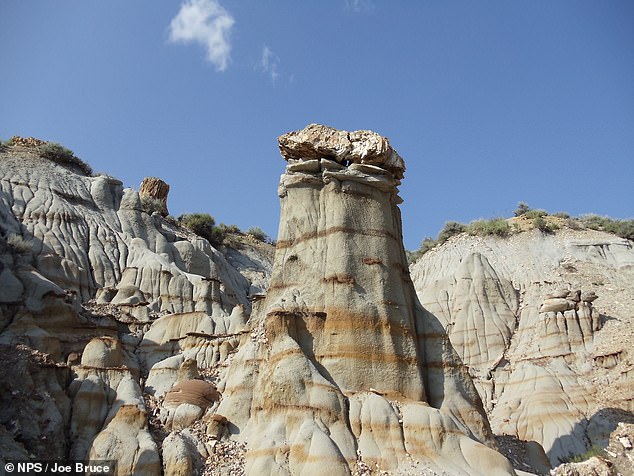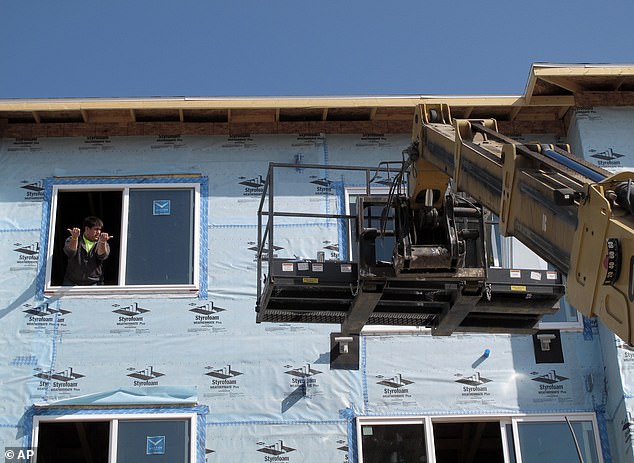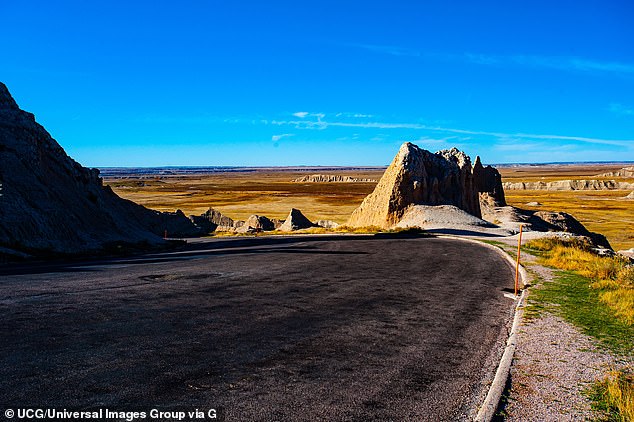Deep-red Midwestern state booms with higher home values, low unemployment and a surge in newcomers thanks to oil boom
A boom in oil production in a deep-red Midwestern state has led to rising home prices and a drop in unemployment as an influx of newcomers brought record numbers of residents.
In the past, North Dakota officials had to lure people to the state, but as the oil industry has grown over the past decade, interest has surged.
The once desolate area is now thriving, but rising house prices are leaving some residents struggling to find a roof over their heads.
Last year, the average home value was around $200,000, an increase of more than 20 percent from 2011.
“Homes are up across the state and inventory is low across the state,” Beck told the Associated Press‘That comes as a shock to many people.’
In the past, officials in North Dakota had to convince people to move there, but after the oil industry took over, population growth skyrocketed. (Photo: Main Street in downtown Fargo, ND)

Currently, the Midwestern state, home to Badlands National Park (pictured), has a record population and the lowest unemployment rate in the U.S., with about 20,000 unfilled jobs.
According to data from the North Dakota Association of Realtors, the average sales price of a home in the Flickertail State was $201,991 last year. In 2011, the average price of a home was $168,105.
The oil boom began just a decade after the state struggled with a population problem. But after government officials funded job fairs across the country to encourage residents to move there, people quickly flocked.
Currently, the Midwestern state, which is also home to Badlands National Park, has a record population and the lowest unemployment rate in the U.S., with about 20,000 unfilled positions.
The influx of newcomers is making it difficult for the state to house everyone.
“Young families are being priced out of the state,” Beck said.
‘I’ve heard stories of a starter home being put up for sale in the evening and the next morning there were ten customers lining up in the driveway to view it.’
In addition to rising house prices, rental prices also have an impact on residents.

The average sales price of a home in the Flickertail State was $201,991 last year, up from $168,105 in 2011. (Pictured: Construction workers lift materials into a new apartment complex in Bismarck in 2012)
A recent study found that Williston, a city of about 29,160 residents, has the highest rents in the country, with a one-bedroom apartment costing about $2,400 per month.
In Dickinson, another heavily populated North Dakota city, the average monthly apartment cost was $1,733, the study found. The city of about 25,000 people ranked fourth in the nation.
For comparison, Jeff Zarling, president of a business development firm in Williston, said a two-bedroom apartment in the city averaged about $300 a month a few years ago.
Zarling is convinced that house prices have quadrupled in recent years.
The research found that home prices in both North Dakota cities are higher than in more expensive US cities, such as New York and Los Angeles.
Zarling said many people try to cut costs wherever possible, even if that means living with others.
“You’re lucky if you can find anything under $300,000. What this really does is make people roommates,” he added.

Many residents have tried to cut costs by moving in together, as housing prices and rents have risen astronomically. (Photo: Badlands National Park)
Low-income residents and seniors are also in trouble because their populations are larger than the state can support, said Jolene Kline, director of the North Dakota Finance Agency.
North Dakota Housing Incentive Fund— a state-funded financing program that uses private and federal dollars to build affordable housing — will only be able to finance about 650 units this year, but Kline said that’s not nearly enough.
“We are 3,000 short. Everyone should be very concerned,” she warned.
While low-income and middle-class residents still struggle to find housing in the state, affluent residents now have more options.
A six-bedroom house with an indoor pool and a 16-seat movie theater in Fargo is on the market for $2.8 million. The massive home last sold in 2007 for $1.8 million.
In the town of Grassy Butte, a 2,000-square-foot home, including a second rental unit, is also for sale for $2.8 million.
According to the list, the new owners will receive $18,500 a year “from the oil company’s surface damage,” AP reported.
